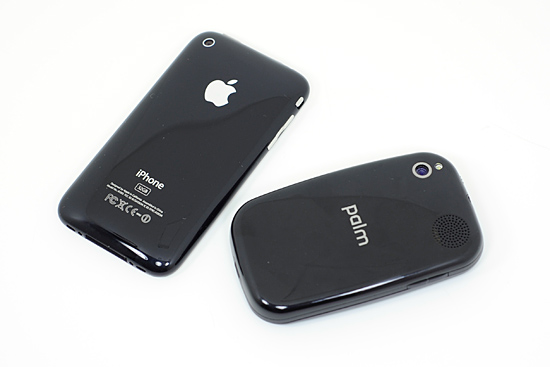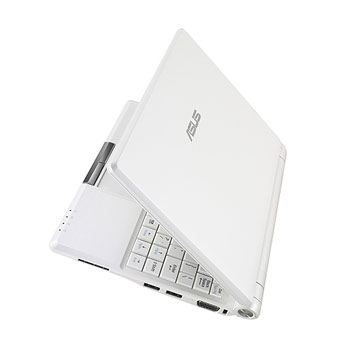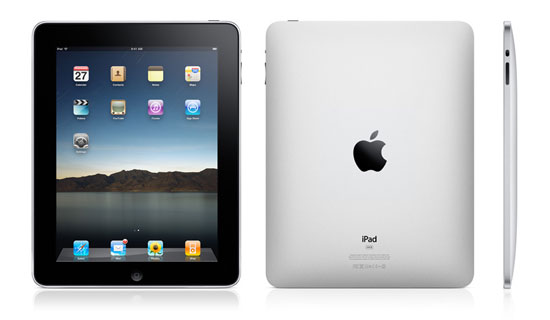The Apple iPad - Anand's Analysis
by Anand Lal Shimpi on January 27, 2010 5:00 PM EST- Posted in
- Smartphones
- Mobile
About a decade ago Mike Andrawes and I kept hoping someone would come out with a device that would make surfing the web on the couch easier than it was. Mike took the notebook route. He kept buying (or stealing from me) notebooks that were cooler, thinner and lighter while still being a notebook, for the purpose of browsing the web.
I took a more extreme route. I tried ultraportables. I bought a Sony PictureBook. It had a Transmeta Crusoe processor in it, which was horribly slow but gave me the form factor and battery life I craved. I put up with a ridiculously impractical screen just to get something small to browse the web and do work on.
Matthew Witheiler, another AnandTech veteran took a different path. He embraced the tablet PC. Matt became our Tablet PC reviewer on AnandTech as he searched for the perfect device. Unfortunately, he never found it.
None of us did. Today we all went back to the tried and true device: the notebook. The iPhone came along and gave us a revolution in the smartphone space. Ultimately it and the devices that followed just complemented our notebooks - sometimes with a new level of frustration as we were now at the mercy of wireless carriers and ridiculously slow SoCs.

The smartphone revolution gave us some great devices
History likes to repeat itself, and that’s what we’ve seen happen over the past two years. The introduction of the netbook brought the journey full circle. People wanted a cheap, light, portable web surfing and light work device - the netbook did just that.
The keyboard and screen issues have been mostly solved. Performance still sucks and part of that is due to the fact that there are no good netbook OSes that are optimized for the level of performance a 1.6GHz Atom can deliver. Most OEMs ship some variant of Windows on these devices, and with less than 2GB of memory and a single-core in-order CPU, that’s just too much to be fast.

Back to ultraportables again
There’s also the issue of storage. Netbooks desperately need solid state storage, but a single 2.5” SSD is often over half the price of a netbook itself. Pair up a slow CPU with not enough memory and a really slow hard drive and it’s not a good combination.
Microsoft, Intel and Apple have all taught me one very important lesson over the past 13 years: if you’re going after a new usage model, you need new technology to tackle it. For Microsoft and Apple that meant a new UI with Media Center and the iPhone. For Intel it meant a brand new microarchitecture optimized for power efficiency. First with Banias (Pentium M/Centrino) and then with Atom.
Netbooks, and to a greater extent tablets, eReaders and smartbooks, are going after new usage models. These aren’t notebook replacements, they are a new category of device designed for a different usage model. The one thing they’ve all been missing is the perfect combination of hardware and software to deliver the whole package.
The one thing Apple prides itself on is doing just that. As one of very few one-stop hardware/software makers, it has the ability to tightly couple UI with physical design. We saw it manifest in its greatest way with the iPhone, and now Apple (or perhaps the media covering Apple) is attempting to recreate the magic with the iPad.

The final frontier?
The device doesn’t ship for another 60 days, but there’s a lot to talk about based on today’s introduction alone.










155 Comments
View All Comments
Mike1111 - Friday, January 29, 2010 - link
Why wouldn't you? It's not like Windows where a higher ppi means smaller text.My problem with exactly 1080p would have been the aspect ratio. 16:9 is not really optimal for a tablet, 3:2 like the iPhone makes imho the most sense (with 16:9 a landscape software keyboard would take up too much screen real estate). 1920x1280 (multiple of iPhone resolution) would have been my personal favorite.
But since it's highly unlikely that Apple will change the resolution or aspect ratio anytime soon (imho not for at least 2 years), we'll have to live with 1024x768 and 4:3 for a while. Maybe if the iPad is a mega huge success Apple will develop an iPad Pro ($800-$1200 instead of $500-$830) for the high-end :)
AstroGuardian - Thursday, January 28, 2010 - link
What about DRM and it's disgusting consequences? Anand?A5 - Thursday, January 28, 2010 - link
If you still want to fight the DRM fight, I'd recommend a time machine to 5 years ago. DRM isn't going anywhere and this device isn't going to do anything worse than devices that are already out there.Sandwiched - Thursday, January 28, 2010 - link
You mentioned that the resolution is disappointing, but if the 1024x768 display is a full 9.7" diagonal, then it works out to 131.959 PPI. Considering that a common print quality is 300 DPI, and most computer monitors are in the 72-100 PPI range, I'd say that 132 PPI is pretty decent for a 9.7" screen.Now, if you'd had issue with the bezel size, I could understand that. Perhaps that will be the iPad 2 - same dimensions, smaller bezel, larger screen. :)
Mike1111 - Friday, January 29, 2010 - link
You sit a lot farther away from a computer monitor than you would from the iPad (more like book or magazine reading distance). And even 300 dpi is pretty low for a high quality magazine.The final goal for a ereader tablet should be to look like national geographics, and not just a little better than your computer monitor.
Around 200 ppi would have been okay for the iPad, 250 ppi or more would have been better (Motorola Droid has 265 ppi).
But yes, the bezel could have been smaller. I find that the bezel of the iPhone (top and bottom) is big enough for most thumbs. Plus content almost never starts immediately at the sides. And modern capacitive sensors and software should be able to differentiate between a hand holding the device and a thumb or finger interacting with the screen. I mean you could even place some capacitive sensors (really low density) in the bezel to detect where the user is holding the device to make it easier.
cjb110 - Thursday, January 28, 2010 - link
The usage model presented seems very very similar to the usage model of ChromeOS. The recent interview in Ars had the dev discussing leaving it on the couch, picking it up, browsing to a site and turning it off again.Now I think most people are assuming Chrome OS is a screen+keyboard netbook/laptop...but if iPad is slightly succesfully, I doubt it would take Google very long to get nice touchable UI in there.
Byte - Thursday, January 28, 2010 - link
Ouch, looks like apple finally hit a flop on this one.wwwcd - Thursday, January 28, 2010 - link
Too expensive for free buy!vrodic - Thursday, January 28, 2010 - link
Anand, why do you assume that A4 is ARM based? Apple has extensive development experience in PowerPC architecture, and PA Semi created PowerPC based designs. It also means that there are no ARM license costs. PowerPC is quite a power efficient architecture.Most of the OS is written in portable C code, and recompiling it to a PowerPC architecture is not a significant effort. Also, existing iPhone 3rd party apps could be recompiled with the new SDK to run on iPad, and only if they use some custom ARM assembler code the "port" would require significant effort.
Mike1111 - Thursday, January 28, 2010 - link
As far as I understand it iPhone apps run without any modifications on the iPad.